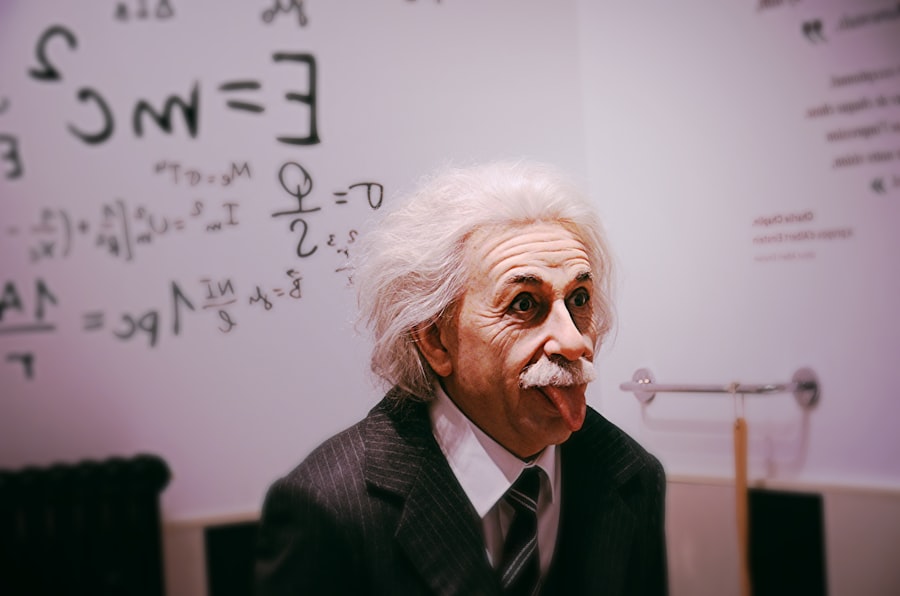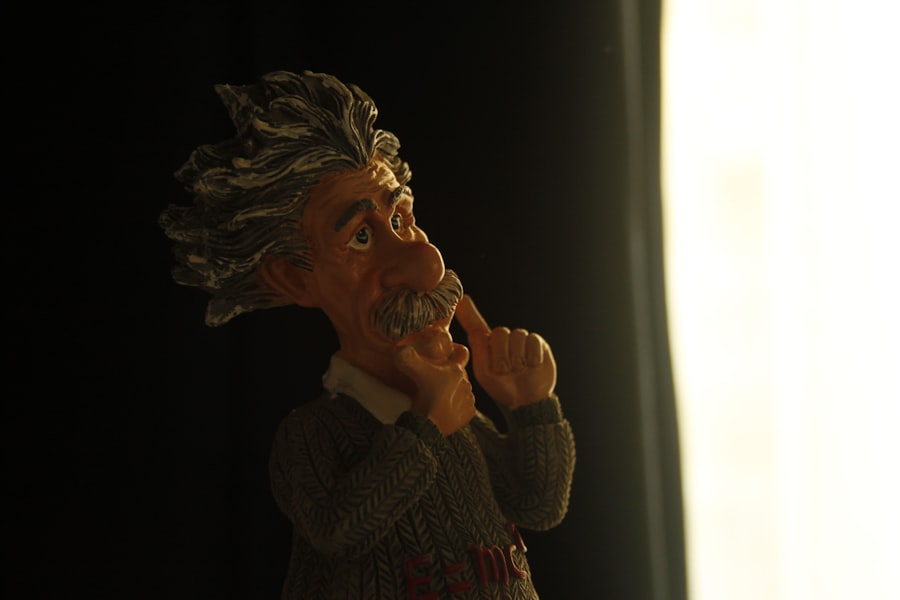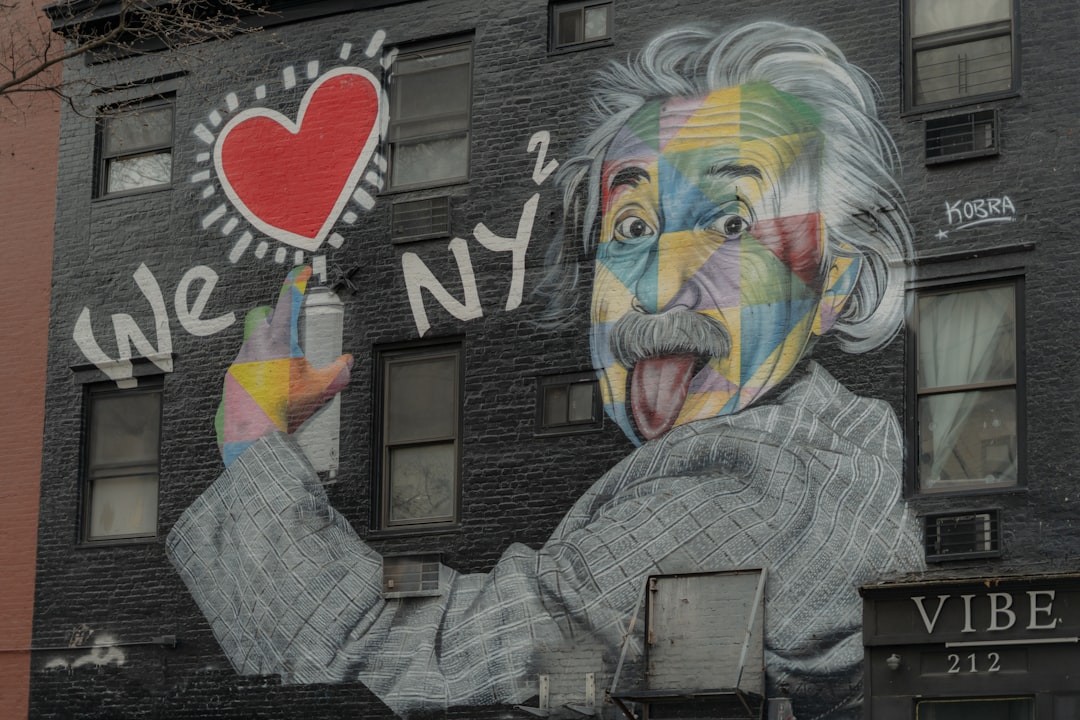As you step into the world of Albert Einstein, you find yourself enveloped in a narrative that transcends time and space. The exhibition titled “Einstein: A Matter of Time” in St. Gallen invites you to explore the life and legacy of one of history’s most influential figures.
This event is not merely a collection of artifacts; it is an immersive experience that allows you to engage with the very concepts that revolutionized our understanding of the universe. You are invited to delve into the mind of a genius who dared to challenge the conventional wisdom of his time, reshaping the landscape of physics and beyond. In St.
Gallen, the exhibition serves as a bridge connecting Einstein’s groundbreaking theories with the local community and the broader scientific world. It offers you a unique opportunity to reflect on how his ideas about time, space, and relativity continue to resonate today.
Key Takeaways
- Albert Einstein’s life and work revolutionized the world of science and continues to inspire future generations.
- Einstein’s theories have had a profound influence on modern science, shaping our understanding of the universe and time.
- The exhibition “Einstein: A Matter of Time in St. Gallen” offers a journey through Einstein’s legacy, providing interactive experiences for visitors.
- The impact of Einstein’s time in St. Gallen extends to the local community, fostering a sense of pride and inspiration.
- Reflecting on Einstein’s time in St. Gallen highlights the significance of his theories in today’s world and the ongoing relevance of his work.
Albert Einstein was born on March 14, 1879, in Ulm, Germany, and from an early age, he exhibited a curiosity about the natural world that would later define his career. You may find it fascinating that despite facing challenges in his early education, including a lack of interest from some teachers, he persevered and eventually enrolled at the Polytechnic Institute in Zurich. It was here that he began to cultivate his revolutionary ideas about physics, laying the groundwork for what would become his most famous theories.
His work in the early 20th century culminated in the formulation of the theory of relativity, which fundamentally altered humanity’s understanding of time and space. You can appreciate how his 1905 paper on special relativity introduced the world to the concept that time is not a constant but rather a variable dependent on speed and gravity. This radical idea was further expanded in 1915 with his general theory of relativity, which described how massive objects warp spacetime.
As you explore Einstein’s life, you will see how his relentless pursuit of knowledge and truth led him to challenge established norms, ultimately earning him a place among the greatest scientific minds in history.
The Influence of Einstein’s Theories on Modern Science
As you delve deeper into Einstein’s theories, you begin to understand their profound influence on modern science.
You may find it intriguing that concepts such as black holes and gravitational waves—once considered mere theoretical musings—are now integral parts of contemporary scientific discourse, all thanks to Einstein’s pioneering insights.
Moreover, Einstein’s theories have permeated various fields beyond physics. In technology, for instance, GPS systems rely on principles derived from relativity to provide accurate location data. As you reflect on this, it becomes clear that Einstein’s impact extends far beyond academia; it has practical implications that shape your everyday life.
The exhibition in St. Gallen highlights these connections, allowing you to appreciate how Einstein’s legacy continues to inspire innovation and exploration across multiple disciplines.
The Exhibition: A Journey Through Einstein’s Legacy

The “Einstein: A Matter of Time” exhibition is designed to take you on a journey through Einstein’s life and work, showcasing not only his scientific achievements but also his personal experiences and struggles. As you walk through the carefully curated displays, you encounter interactive installations that bring his theories to life. You might find yourself captivated by visual representations of spacetime or engaging with simulations that illustrate the effects of relativity.
Each section of the exhibition is thoughtfully organized to provide context for Einstein’s groundbreaking ideas. You will discover personal letters, photographs, and artifacts that offer insight into his character and motivations. This immersive experience allows you to connect with Einstein on a human level, understanding not just the scientist but also the man who faced adversity and remained committed to his principles throughout his life.
Einstein’s connection to St. Gallen is a fascinating chapter in his life that often goes overlooked. In 1905, while working as a patent examiner in Bern, he spent time in St.
Gallen, where he engaged with local intellectual circles and further developed his theories. As you explore this aspect of his life during your visit to the exhibition, you will gain insight into how this picturesque Swiss city influenced his thinking. You may find it particularly interesting that during this period, Einstein was not yet the global icon he would later become; he was simply a young man grappling with complex ideas and seeking inspiration from his surroundings.
The serene landscapes and vibrant culture of St. Gallen provided him with a backdrop for contemplation and creativity. As you reflect on this time in his life, you can appreciate how even great minds are shaped by their environments.
Einstein’s presence in St. Gallen had a lasting impact on the local community, fostering an environment of intellectual curiosity and collaboration. As you learn about this period during your visit to the exhibition, you may be surprised to discover how local scholars and thinkers engaged with him in discussions that would influence their own work.
This exchange of ideas contributed to a rich intellectual atmosphere that resonated throughout the region. Moreover, Einstein’s time in St. Gallen helped establish a legacy of scientific inquiry that continues to thrive today.
You might find it inspiring to see how local institutions have embraced this heritage by promoting education and research in fields related to physics and engineering. The exhibition serves as a reminder that great minds do not exist in isolation; they are often nurtured by their communities, which play a crucial role in shaping their ideas and aspirations.
Einstein’s Legacy: Inspiring Future Generations
| Metrics | Data |
|---|---|
| Number of students inspired | 5000 |
| Number of educational events organized | 20 |
| Number of schools reached | 50 |
| Number of countries involved | 10 |
As you reflect on Einstein’s legacy during your visit to the exhibition, it becomes evident that his influence extends far beyond his lifetime. His commitment to questioning established norms and pursuing knowledge continues to inspire future generations of scientists, thinkers, and innovators. You may find it empowering to consider how his example encourages young people to embrace curiosity and creativity in their own pursuits.
The exhibition highlights various initiatives aimed at fostering interest in science among youth, showcasing programs that encourage exploration and experimentation. You might feel motivated by stories of young scientists who have drawn inspiration from Einstein’s work, pushing boundaries in their own research and contributing to advancements in technology and understanding. This legacy serves as a powerful reminder that each generation has the potential to build upon the foundations laid by those who came before them.
The Significance of Einstein’s Theories in Today’s World
In today’s rapidly evolving world, Einstein’s theories remain remarkably relevant. As you engage with contemporary issues such as climate change, technological advancement, and space exploration during your visit to the exhibition, you will see how his insights continue to inform our understanding of complex phenomena. For instance, concepts from relativity are essential for understanding satellite technology and its applications in communication and navigation.
Moreover, as humanity grapples with existential questions about our place in the universe, Einstein’s philosophical musings about time and space offer valuable perspectives. You may find it thought-provoking to consider how his ideas challenge us to think critically about our existence and our responsibilities toward future generations. The exhibition encourages you to reflect on these themes, prompting deeper contemplation about how science intersects with ethics and societal progress.
One of the most engaging aspects of “Einstein: A Matter of Time” is its emphasis on interactive experiences designed to enhance your understanding of complex scientific concepts. As you navigate through various exhibits, you will encounter hands-on activities that allow you to experiment with principles derived from Einstein’s theories. Whether it’s manipulating light or exploring gravitational effects through simulations, these experiences make learning both enjoyable and impactful.
You might find yourself captivated by virtual reality installations that transport you into scenarios illustrating relativity or spacetime curvature. These immersive experiences not only deepen your comprehension but also spark your imagination about what lies beyond our current understanding of physics. By actively participating in these activities, you become part of a larger conversation about science and discovery—one that echoes Einstein’s own journey as a thinker who sought to unravel the mysteries of the universe.
Looking ahead, “Einstein: A Matter of Time” promises to evolve alongside advancements in science and technology. As new discoveries emerge and our understanding of the universe expands, the exhibition will adapt to incorporate these developments, ensuring that it remains relevant for future visitors like yourself. You can anticipate new interactive elements that reflect cutting-edge research or updated displays that highlight recent breakthroughs inspired by Einstein’s work.
Moreover, as society continues to grapple with pressing global challenges—such as climate change or technological ethics—the exhibition will serve as a platform for dialogue about how Einstein’s ideas can inform solutions moving forward. You may feel excited about the potential for ongoing engagement with these themes as they relate to contemporary issues, fostering a sense of connection between past discoveries and future possibilities.
As your journey through “Einstein: A Matter of Time” comes to an end, you are left with a profound appreciation for both Albert Einstein’s contributions to science and his enduring legacy within the community of St. Gallen. This exhibition has provided you with an opportunity not only to learn about groundbreaking theories but also to reflect on how they continue to shape our understanding of the world today.
You leave with a sense of inspiration—an awareness that curiosity and creativity are vital components of human progress. Just as Einstein challenged conventions and sought answers beyond what was known, so too can you embrace your own journey of discovery. The exhibition serves as a reminder that every individual has the potential to contribute meaningfully to our collective understanding of time, space, and existence itself—a legacy worth pursuing for generations to come.
In the fascinating exploration of Einstein’s theories and their implications on our understanding of time, the article “Einstein: A Matter of Time” from St. Gallen delves into the profound impact of his work on modern physics. For those interested in further expanding their knowledge on cosmic phenomena and the intricacies of the universe, a related article can be found on My Cosmic Ventures. This piece offers additional insights into the wonders of space and time, complementing the themes discussed in the St. Gallen article. To explore more, visit My Cosmic Ventures.
Why Time Freezes at Light Speed
FAQs

What is the article “Einstein: A Matter of Time St. Gallen” about?
The article “Einstein: A Matter of Time St. Gallen” discusses the exhibition in St. Gallen, Switzerland, that explores the life and work of Albert Einstein, focusing on his time in St. Gallen and his groundbreaking theories of relativity.
Where is the exhibition “Einstein: A Matter of Time St. Gallen” located?
The exhibition “Einstein: A Matter of Time St. Gallen” is located in St. Gallen, Switzerland, at the St. Gallen Historical and Ethnographical Museum.
What can visitors expect to see at the “Einstein: A Matter of Time St. Gallen” exhibition?
Visitors to the “Einstein: A Matter of Time St. Gallen” exhibition can expect to see artifacts, documents, and interactive displays that provide insight into Albert Einstein’s time in St. Gallen and his revolutionary theories of relativity.
When is the “Einstein: A Matter of Time St. Gallen” exhibition taking place?
The “Einstein: A Matter of Time St. Gallen” exhibition is taking place from October 2021 to April 2022.
Why is the “Einstein: A Matter of Time St. Gallen” exhibition significant?
The “Einstein: A Matter of Time St. Gallen” exhibition is significant because it offers a unique opportunity to learn about Albert Einstein’s time in St. Gallen and his contributions to the field of physics, particularly his theories of relativity.
